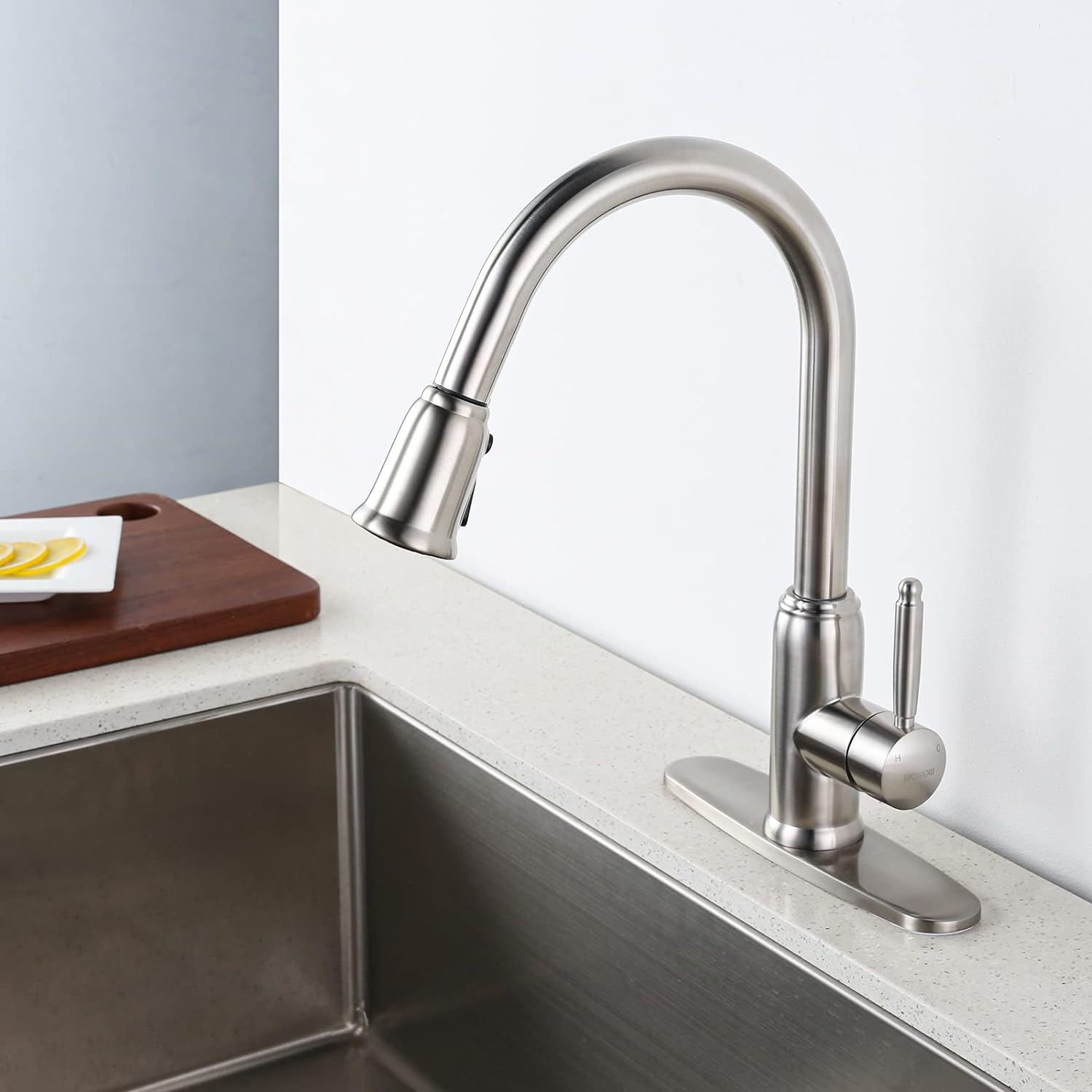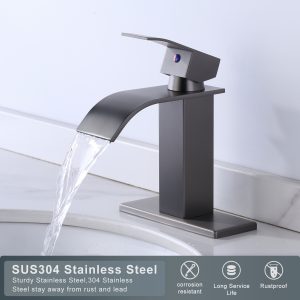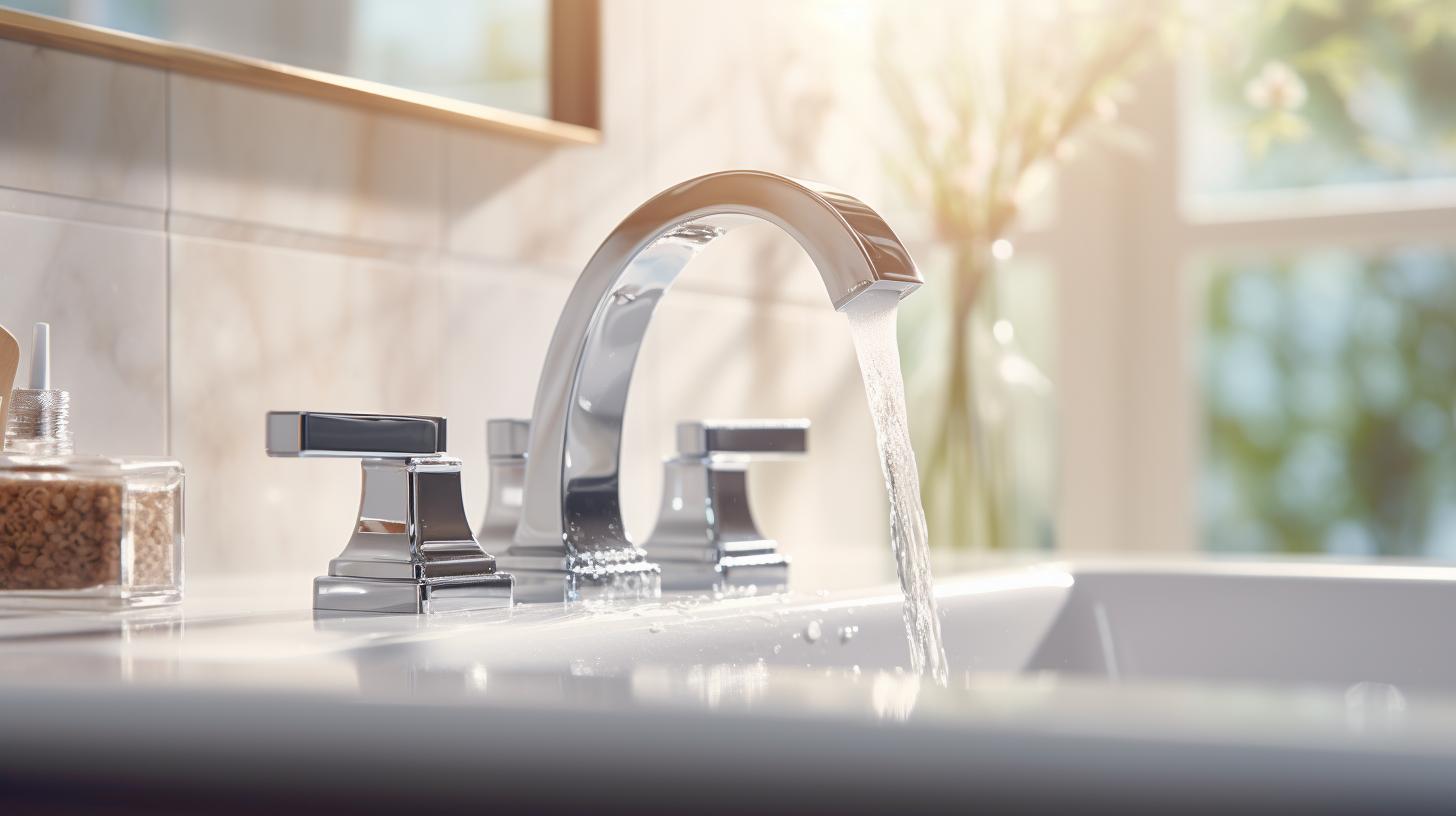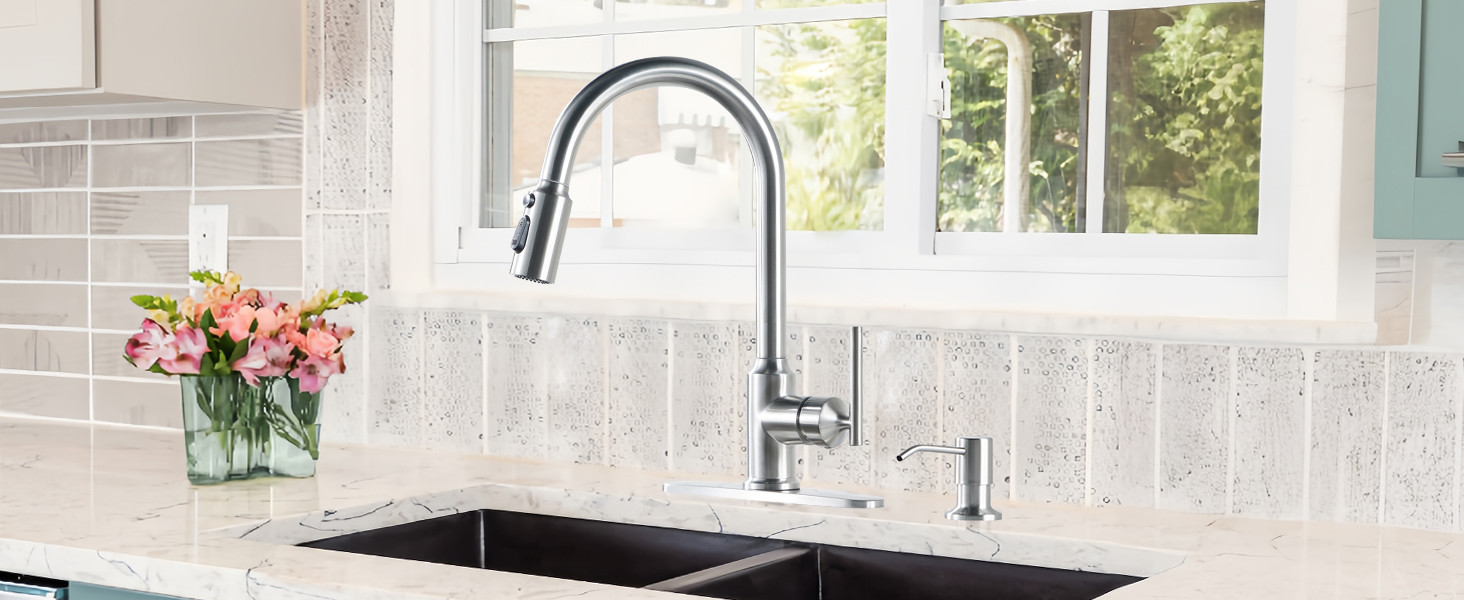How to choose a kitchen faucet? The kitchen is often considered the heart of a home, and at its center lies the kitchen sink with faucet. These humble yet essential fixtures play a pivotal role in our daily lives, whether we’re washing dishes, preparing meals, or simply getting a glass of water. Choosing the right kitchen sink and faucet is a decision that can significantly impact both the functionality and aesthetics of your kitchen. In this article, we will explore the importance of the kitchen sink and faucet and guide you on how to make the best choice for your space.
The Kitchen Sink with Faucet: More Than Just a Basin
The kitchen sink with faucet is more than just a basin for washing dishes; it’s a workhorse in your kitchen, handling a wide range of tasks daily. To make an informed choice, it’s essential to consider several factors:
1. Material
The first consideration when selecting a kitchen sink is the material. Stainless steel is a popular choice due to its durability, resistance to stains, and ease of maintenance. Other materials, such as cast iron, granite composite, and fireclay, also offer their unique advantages and aesthetics.
2. Size and Configuration
Consider the size of your kitchen and your cooking habits when choosing a sink size and configuration. Single-bowl sinks are versatile and spacious, while double-bowl sinks provide separation for tasks like washing and rinsing. Additionally, the depth of the sink matters – deeper sinks can accommodate larger pots and pans, while shallower sinks save counter space.
3. Mounting Style
Sinks can be top-mounted (drop-in), under-mounted, or flush-mounted. Top-mounted sinks are the easiest to install, while under-mounted sinks offer a sleek, seamless appearance. Flush-mounted sinks, often made of the same material as the countertop, create a visually appealing, integrated look.
4. Maintenance and Cleaning
Some sink materials are easier to clean and maintain than others. Stainless steel and granite composite sinks are generally low-maintenance, while porcelain and fireclay sinks may require more care to prevent staining or chipping.
5. Accessories
Think about additional features like drainboards, cutting boards, or built-in colanders. These accessories can improve the functionality of your kitchen sink.
How to choose a kitchen faucet? —-The Kitchen Faucet: A Vital Companion
vWhile the sink is the basin of the kitchen, how to choose a kitchen faucet?The faucet is its lifeline. Here’s what you need to consider when selecting a kitchen faucet:
1. Style and Aesthetics
The faucet’s style should complement your kitchen’s design. Choose a faucet that matches the overall look, whether it’s modern, traditional, industrial, or minimalist. Consider finishes like chrome, brushed nickel, matte black, or brass for added visual appeal.
2. Types of Faucet
There are various types of kitchen faucets, each with its own unique features:
- Single-Handle Faucet: Easy to use and control, single-handle faucets are ideal for those who prefer a simple design.
- Double-Handle Faucet: These faucets offer separate handles for hot and cold water, allowing for precise temperature control.
- Pull-Down Faucet: Featuring a flexible hose, pull-down faucets are convenient for washing dishes and filling pots.
- Pull-Out Faucet: Similar to pull-down faucets, pull-out faucets offer versatility in maneuverability and can make kitchen tasks more efficient.
3. Functionality and Features
Consider your daily kitchen routines. Do you need a faucet with a built-in sprayer, touchless operation, or a filter for drinking water? These features can enhance the functionality of your faucet.
4. Durability and Maintenance
Quality matters. Look for faucets made of durable materials such as brass or stainless steel. Additionally, choose a finish that’s easy to clean and resists corrosion and tarnishing.
5. Installation
The ease of installation can be a significant factor in your decision. Some faucets require a single hole, while others need multiple holes for mounting. Ensure your sink or countertop can accommodate the faucet you desire.
Choosing the Perfect Combination
To create a harmonious and functional kitchen, the sink and faucet need to work well together. Here are some tips to help you choose the perfect combination:
1. Size Matters
Ensure that the sink and faucet are proportionate to each other. A small faucet may look lost over a large sink, while an oversized faucet could overwhelm a smaller sink.
2. Compatibility
Make sure the faucet and sink are compatible in terms of installation. Double-check the number of holes required for mounting the faucet and the available holes in the sink or countertop.
3. Faucet Height
Consider the height of the faucet’s spout in relation to the sink’s depth. A high-arc faucet may be suitable for deep sinks, while a low-arc faucet works better with shallow sinks.
4. Handle Placement
Think about how the faucet’s handle(s) will affect your workspace. Ensure there is enough space between the handle and the backsplash or wall.
5. Finish Harmony
Coordinate the finish of your faucet with the sink and other kitchen fixtures. A unified finish theme can tie the space together and create a polished look. Coordinate the finish of your faucet with the sink and other kitchen fixtures. A unified finish theme can tie the space together and create a polished look. The choice of faucet finish should complement the overall design of your kitchen. Consider the finish of your sink, cabinet hardware, and other kitchen fixtures. Matching or coordinating finishes can create a cohesive and visually pleasing space. For example, if you have a stainless steel sink, a brushed nickel or stainless steel faucet finish can provide a harmonious look. Alternatively, if your kitchen features a mix of finishes, such as stainless steel appliances and matte black cabinet hardware, you can choose a faucet finish that complements and bridges the different elements.
Conclusion
Choosing the right kitchen sink with faucet is a decision that impacts the functionality and aesthetics of your kitchen. Consider factors like material, size, configuration, mounting style, maintenance, and accessories when selecting a sink. For the faucet, think about style, type, functionality, durability, and installation. The combination of a well-chosen sink and faucet will not only serve your practical needs but also enhance the overall appeal of your kitchen. Take your time to research and compare options to create a space that truly reflects your lifestyle and taste. Your kitchen, the heart of your home, deserves nothing less than the best.







